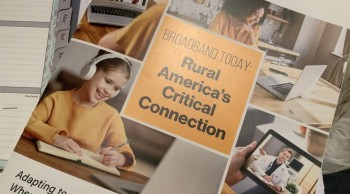As everyone is taking a look back at the past 12 months, I have a lot of emotions running through me. So given all of that, it’s likely best to just stick to broadband business.
Nothing really captures the past year for the rural broadband industry like the Foundation for Rural Service and their recently released publication Broadband Today: Rural America’s Critical Connection. This report is a comprehensive review of how we saw consumer needs, usage and trends change as the Pandemic drastically changed the way we live, work, play, learn and take care of ourselves.
The average broadband network usage soared by 40 percent from the 4th quarter of 2019 to the last quarter of 2020. No surprise given that the world pivoted to a remote existence in many ways. FRS decided to publish this white paper as they evaluated their mission and work as the philanthropic arm of NTCA. The ability of the Foundation to take a step back to assess how the future of our rural communities is intrinsically linked to the future of our nation as a whole. By taking a closer look at the impact of the Pandemic, rural broadband providers and their consumers and communities, FRS hopes to:
- Share with the public, policymakers and other stakeholders information to help them better understand the importance of broadband to rural America, the pandemic’s impact on broadband service and the state of rural broadband in the months and years ahead.
- Equip community leaders with tools to understand broadband’s role in improving the quality of life in their cities, towns and counties.
- Record the pandemic’s impact on various sectors of society – small business, healthcare, education, agriculture among a few.
- Encourage and support a broader national conversation on the importance of broadband to rural citizens in light of the Covid-19 pandemic and the aftermath.
Aside from some interesting statistics like the fact that 37 percent of non-metro students lack full access at home (broadband and devices), 16 percent of non-metro teachers and yet 43 percent of rural school districts say live virtual classes will be a primary part of distance learning strategies for K-5 going forward, the report is filled with specific stories like Smart Rural Community Hill Country Telephone Cooperative in Texas and their work with their community and inmates of the Kerr County Jail to earn their citizenship or GED or learn English as a second language. Or Ben Lomand Connect luring urban dwellers to their service territory with their 1Gbps service (oh, that’s right, they are a Smart Rural Community, Gig Capable Provider as well!)
The report is well worth a read and most certainly worth a share with local policymakers as more and more attention is put on rural broadband. My thanks to the FRS board for the timely investment in education and to WordSouth for partnering on the production of this important document.


